► Spiciest version tested in the UK
► No V8s or V12s, just PHEV sixes
► Usefully different in character to the i7
After decades of burbling petrol V8s and silken V12s, not to mention petrol and diesel sixes, the BMW 7 Series engine range has been narrowed significantly. Replacing this varied selection of piston counts and layouts is a plug-in hybrid only powertrain choice.
Of course, you can buy the all-electric i7, but those that want some ICE in their life have to make do with six cylinders and some forced induction. Entry-level 750e models pair a 309bhp engine up front with an electric motor that chucks out up to 194bhp. Combined they produce 482bhp, so it’s no surprise xDrive is standard.
If 0-62mph in 4.8-seconds is too tardy for you, the M760e gives you a punchier 376bhp inline-six. Electric motor output is the same, with combined power lifting to 563bhp. That’s good enough for a 4.3-second 0-62mph run, although this is still over half a second slower than the i7 M70.
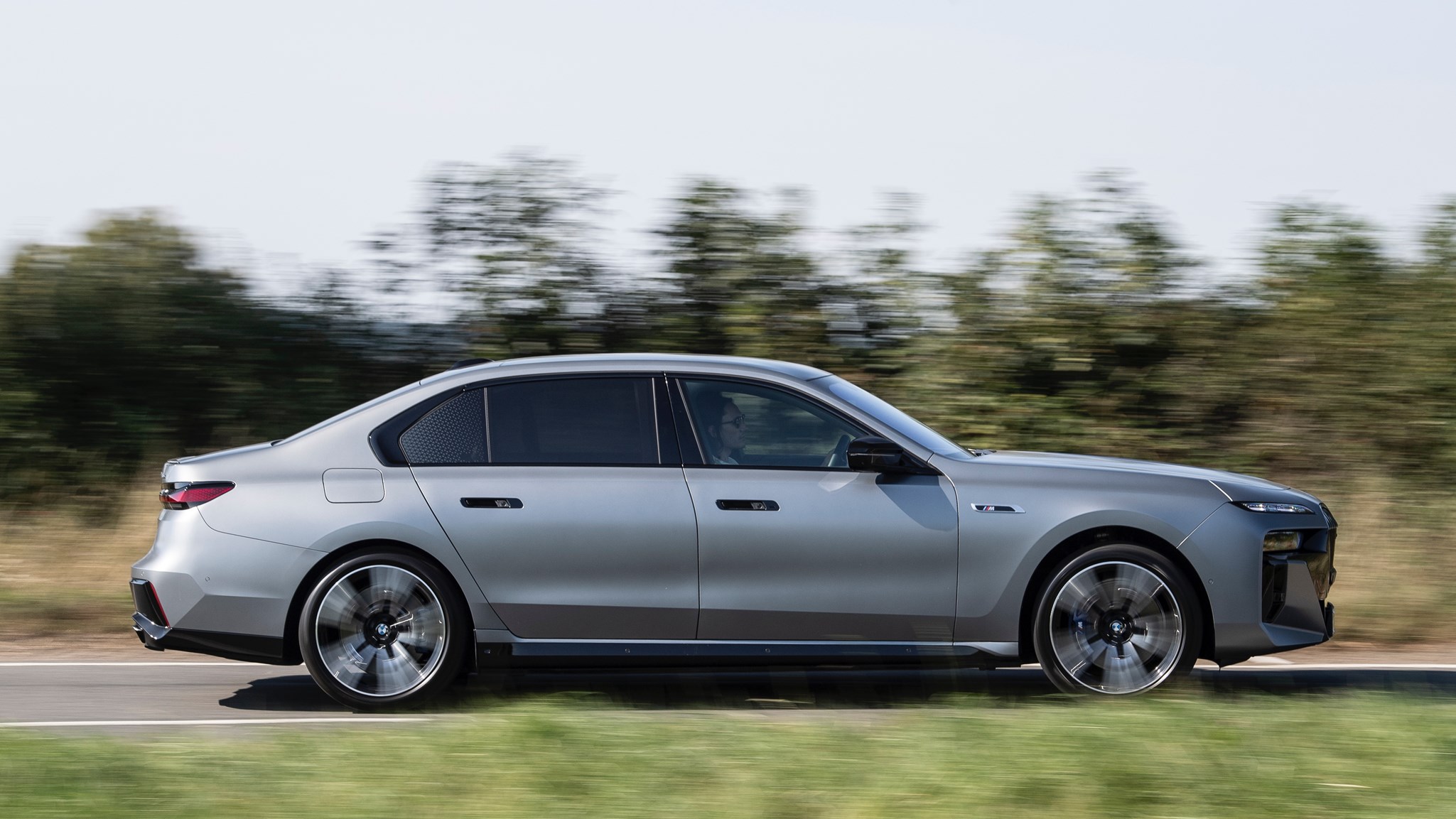
It looks huge
It is huge. The car in the pictures is nearly 5.4m long – longer than the outgoing LWB model – and it’s wider and taller than its predecessor, too. We certainly felt this as we edged carefully out of Gatwick’s short stay carpark, one eye on the bird’s eye camera system to avoid expensive kerbage.
That width and the high window line makes it feel a little bit like you’re sitting in a particularly luxurious bathtub from the driver’s seat – though this is in part down to how low the seats go. Even from this aspect it’s clear that BMW hasn’t forgotten that its primary brand value is as a maker of drivers’ cars.
There is plenty of tech available to take some of the intimidation factor out of the size – including rear-wheel-steering (standard on the M760e), a suite of over 30 external sensors, and a ‘Professional’ parking assistance that can be taught to make complex low speed manoeuvres you can then control from outside the car with your phone. But the cross-cabin front corner visibility is going to take some getting used to.
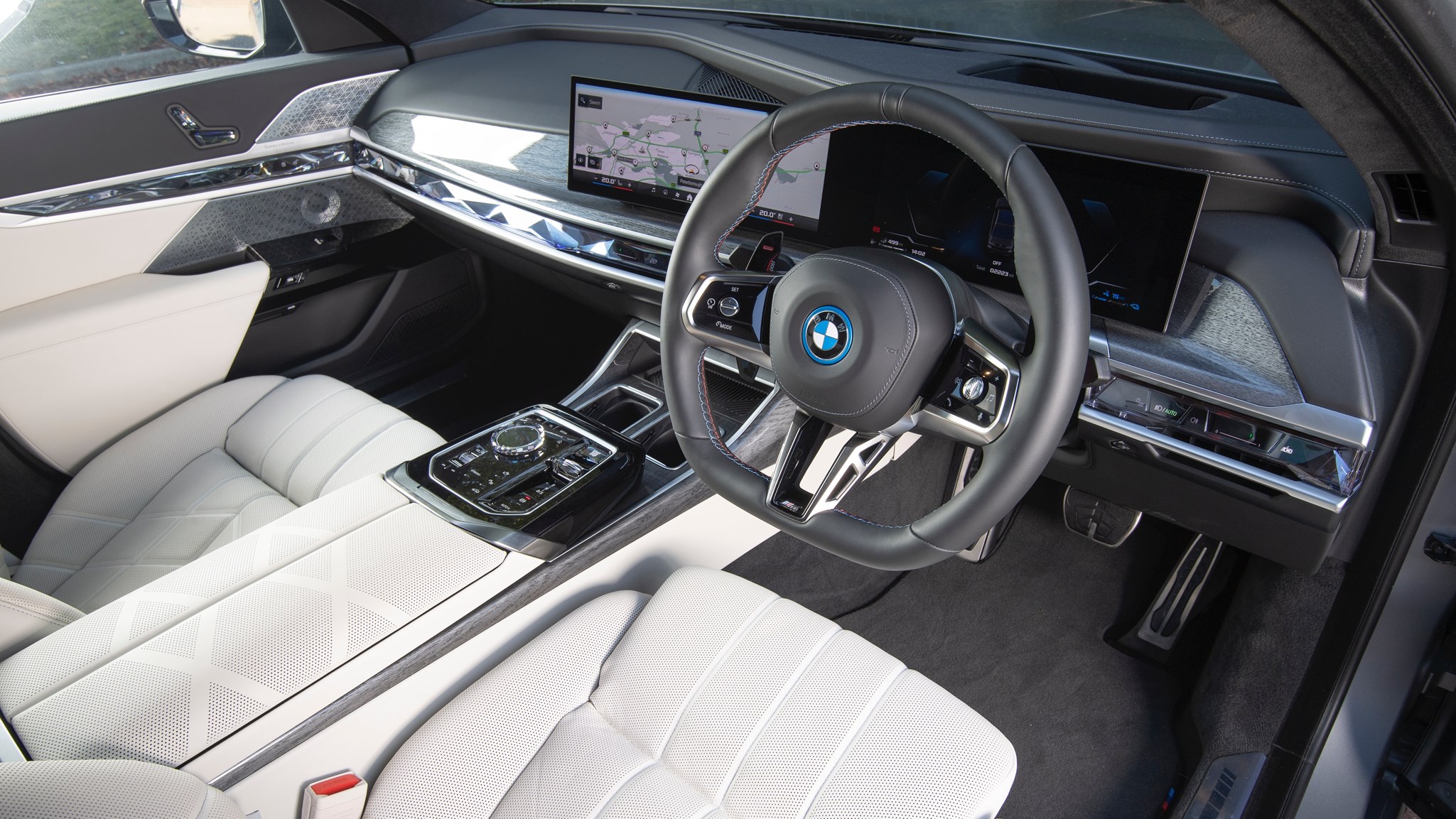
Is it any different to an i7 inside?
No, not really, and all the better for it. That means a bit too much reliance on touch-sensitive controls and the infotainment system, but not to the same extent as the Mercedes S-Class. An Audi A8 is more user friendly but lacks the opulence of the 7 Series, feeling more like a giant A4.
Unlike the S-Class which feels a bit flimsy in places, the build quality of the 7 Series is first rate. You really do need to jump to something like a Rolls Royce Ghost to find better. It’s not quite as outlandish in design as a BMW iX, but it has some of the finest ambient lighting yet seen on a production car and still looks sufficiently techy.
Space front and rear is beyond generous, and the optional Executive package ramps up the luxury further. Electrically adjustable rear seats with heating, cooling and massage make travelling in the back a truly special experience, while the blinds work perfectly with the optional 31-inch theatre screen.
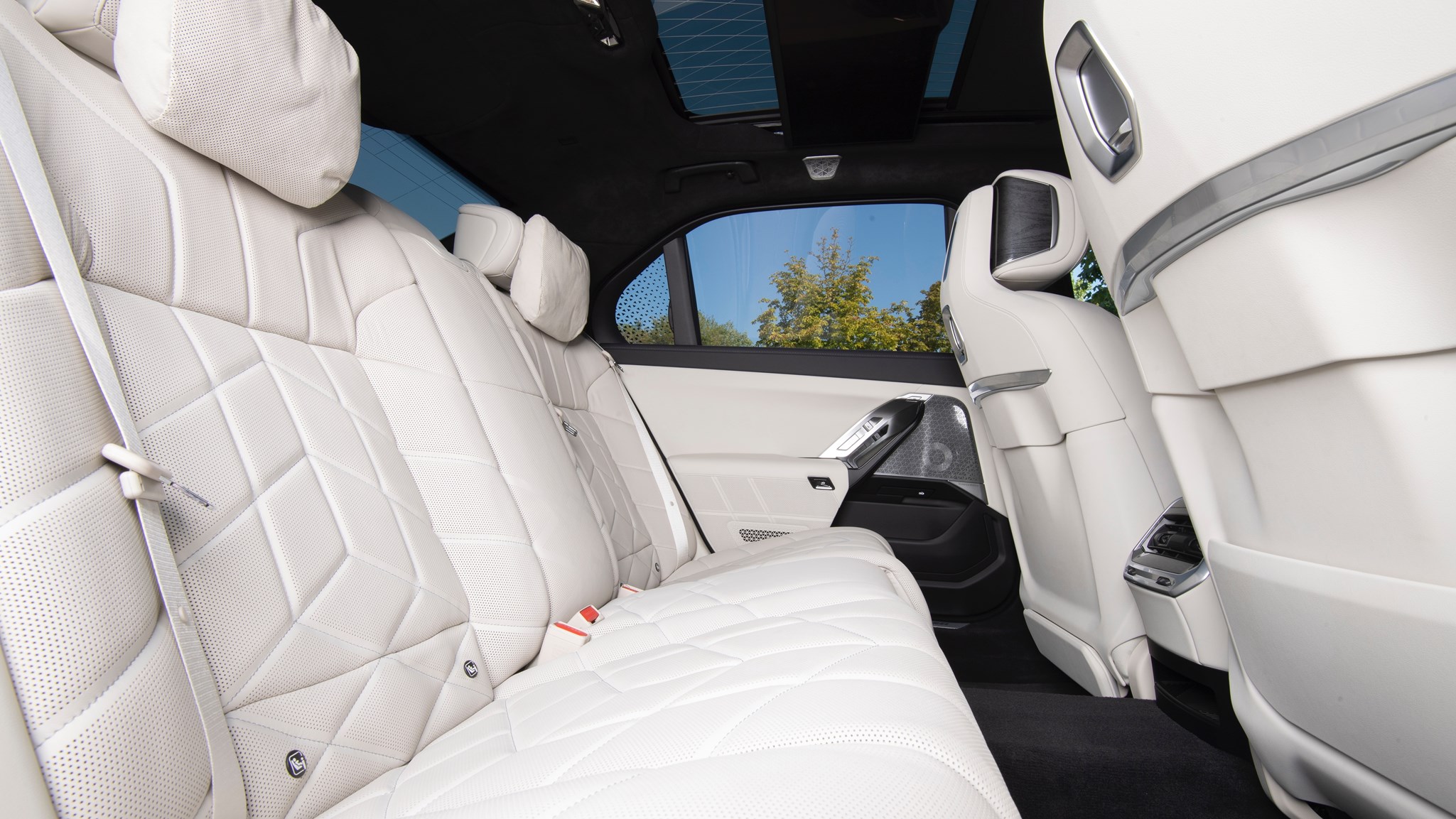
It’s certainly a better option than the electrically operated doors. When they work as expected they’re great, with a simple press of the brake pedal closing the driver’s door, and a discreet button opening them automatically from inside. The external buttons are unpredictable, though.
If you’d like an even deeper dive into the interior, check out our BMW i7 review.
Drive time
It’s quite the contrast to the i7, even though both vehicles have been engineered with the intention of having them drive broadly the same. Rolling refinement is outstanding with little wind or road noise, although the inline-six up front isn’t shy when you bury the throttle.
Going from near-silent to a cultured but subdued howl, only flicking Sport mode on makes it sound unnatural and contrived. Performance is good, if not mind-blowing. It doesn’t feel as explosive off the line as one of the most potent i7s, but once rolling it makes light work of A road overtakes and is more than powerful enough really.
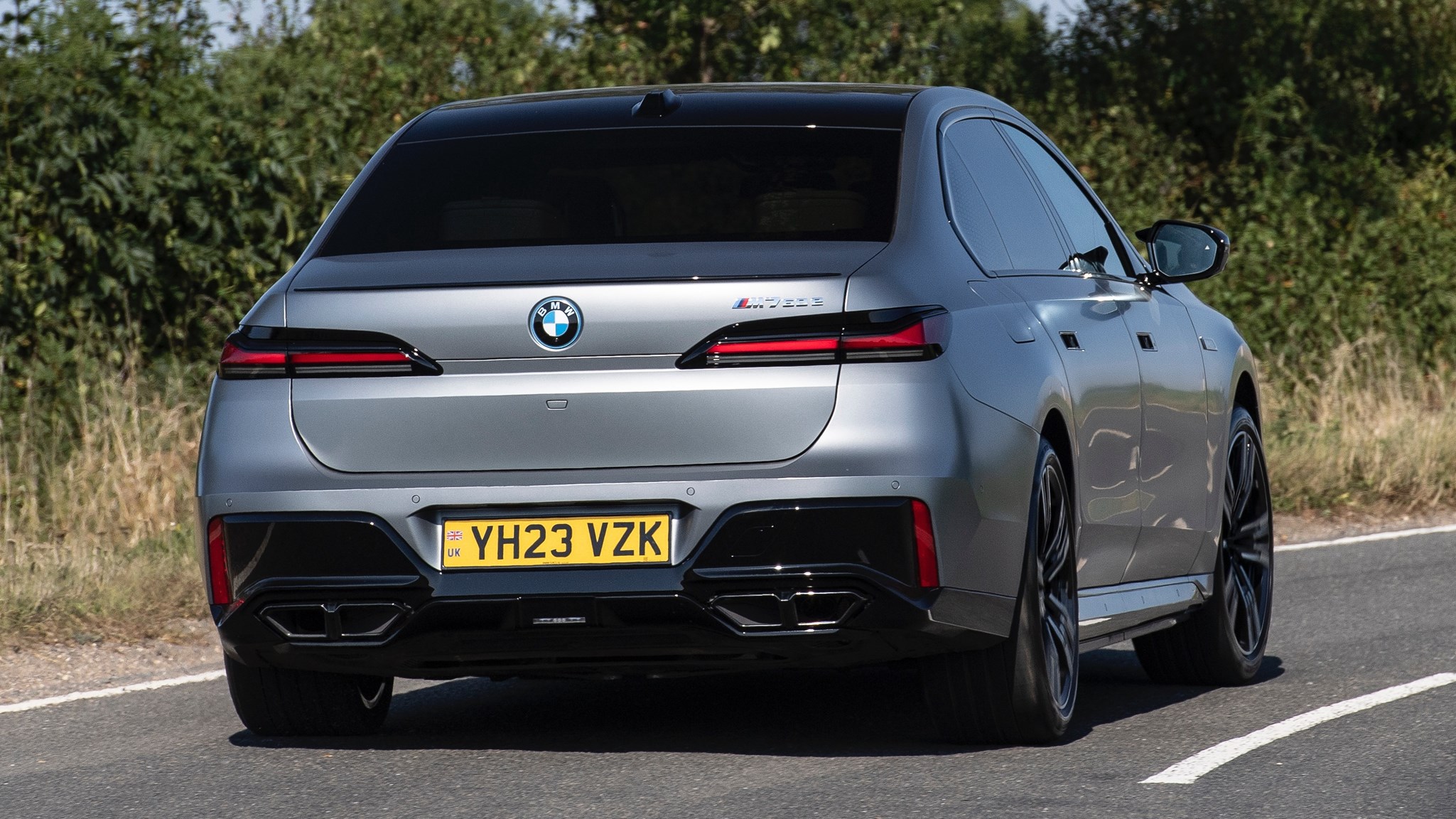
A boost mode on the left gearshift paddle sets the hybrid system on high alert, but to be honest we used it once such is the flexibility of the powertrain. ICE and electric play well together, with smooth changeovers and barely noticeable gearchanges. Even the brake pedal has some feel and predictability.
Punching along straight bits of road is therefore certainly still fun. Where the petrol-powered 7-series starts to assert some actual authority, however, is in the corners.
M760es get the full gamut of chassis tech, including not just all-wheel drive and air suspension with electronically controlled dampers but also 48v active roll control and rear-wheel steering. Although this is available on the i7, only the 7 Series pulls off the trick of feeling genuinely nimble.
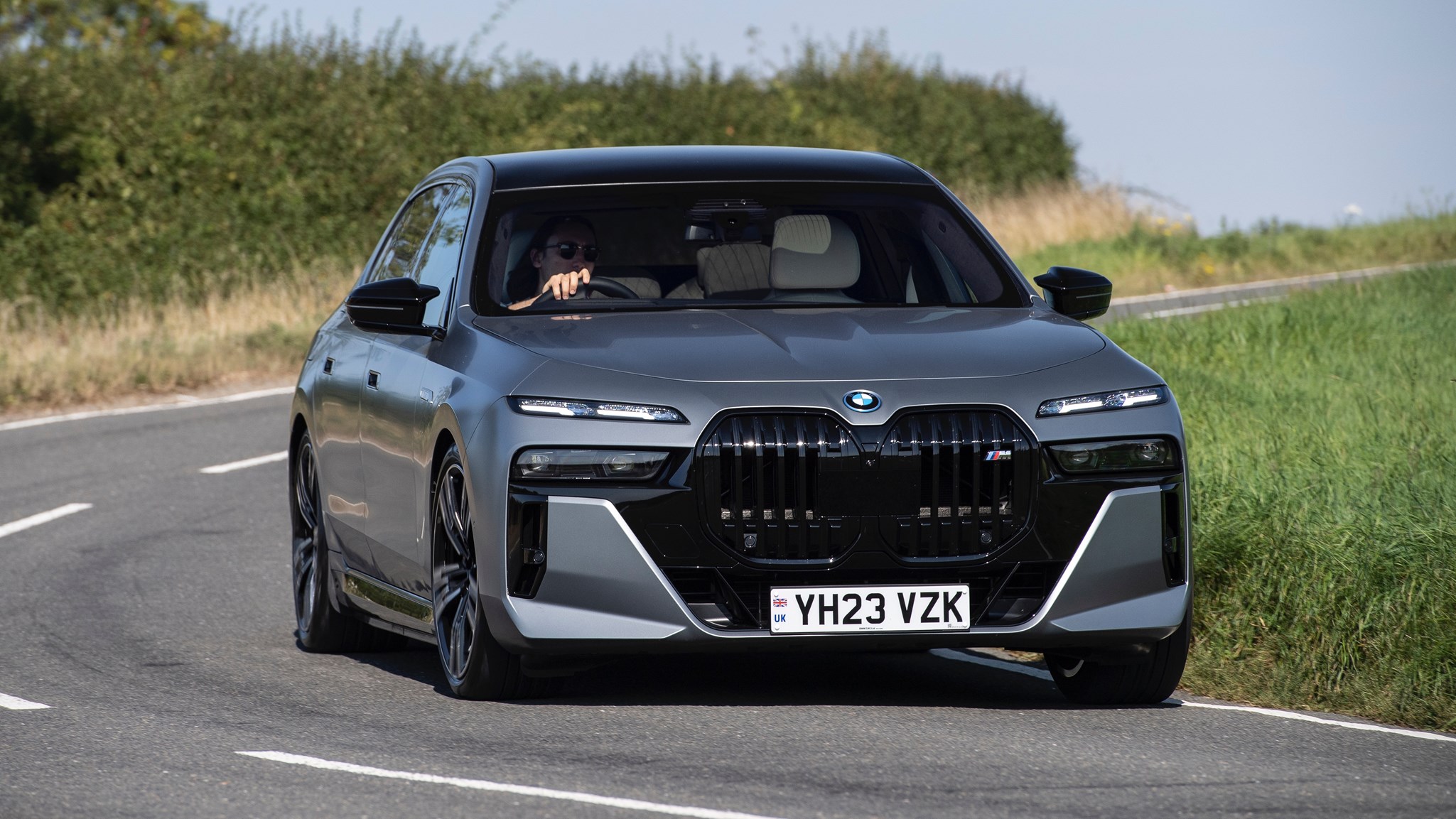
Which is quite some feat, given the size of the thing. The width is always a consideration but the balance and the poise belie the 7 Series’ dimensions in a manner the much heavier i7 can’t quite match. Where the latter always feels like its arm-wrestling physics, you’re much less aware of this in the 7. Given the comfort and size, there’s precious little body roll and a surprisingly agile feel to proceedings.
Conversely, however, when it comes to smothering poor surfaces, the electric car is the master, the hybrid the student. The 7 Series has a bit less waft to it and can’t quite smother imperfect tarmac as effectively.
Bet it’s not that efficient…
Actually, you’d be wrong. An 18.7kWh battery is enough for an electric range of 50 miles according to WLTP testing, although expect around 35-40 in reality. Arguably more impressive is the fuel consumption with a flat battery. On a 130 mile motorway trip at a steady 70mph, we averaged a smidge over 40mpg.
In other words, this is a plug-in with the long distance efficiency of the old diesel and far swifter acceleration. Those lucky enough to get one as a company car will enjoy a low BIK rating, too.
Verdict
We find BMW’s approach to the new 7-series generally appealing – instead of building a bespoke electric car, in this instance it’s engineered its latest flagship right from the start to accept every kind of powertrain. That might be less obviously forward-looking than Mercedes’ approach with the EQS, but it means that every 7-series customer knows that they’re getting the best of BMW’s best, no matter which kind of engine suits their needs and lifestyle.
It’s an approach that’s paid off, just like in the smaller 4 Series and i4. The 7 Series is perhaps not as comfortable as an S-Class, but it feels more luxurious and is undoubtedly the more enjoyable car to drive quickly. After years as the left field choice in German luxury, the 7 is now the barge to beat.